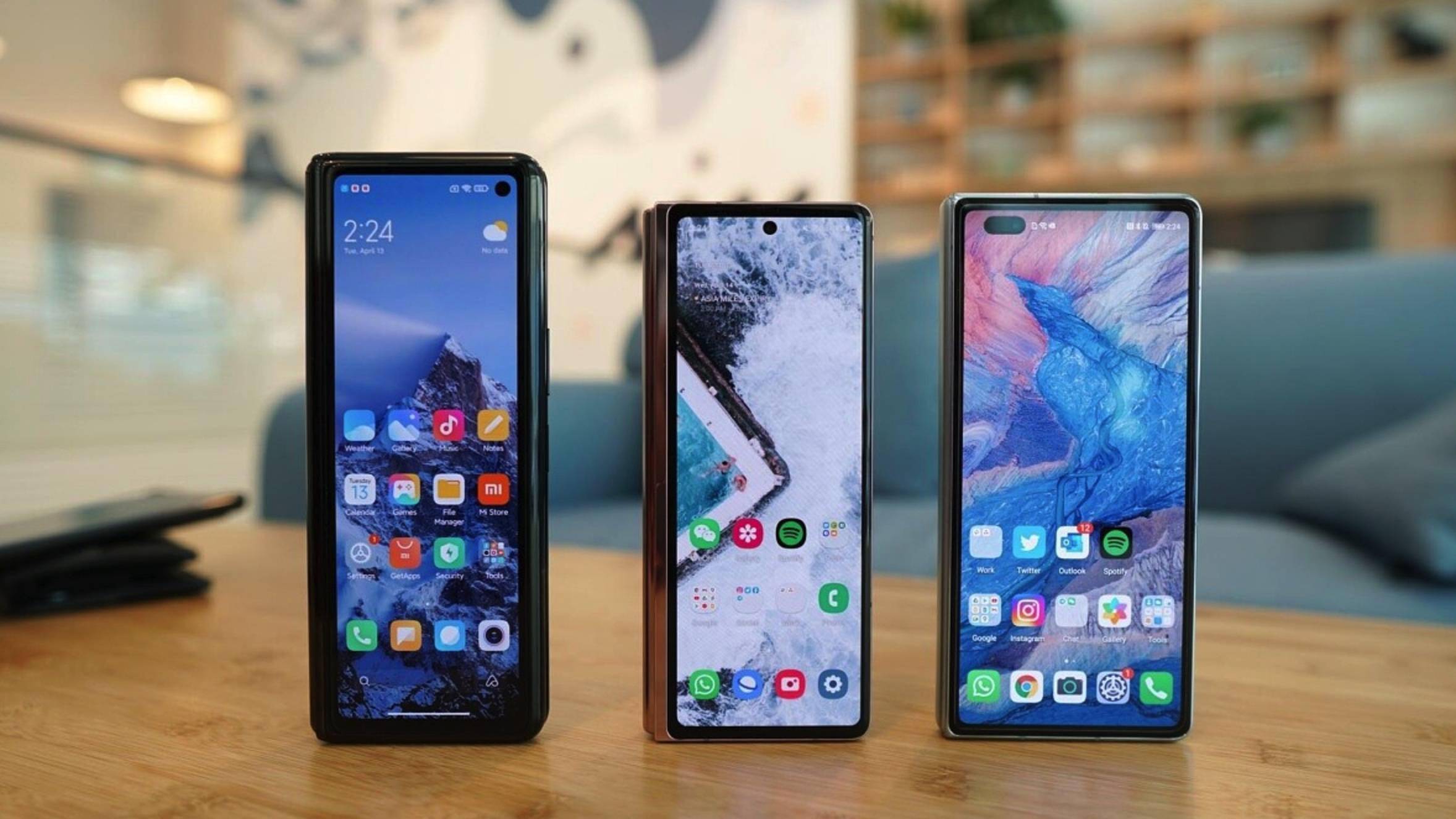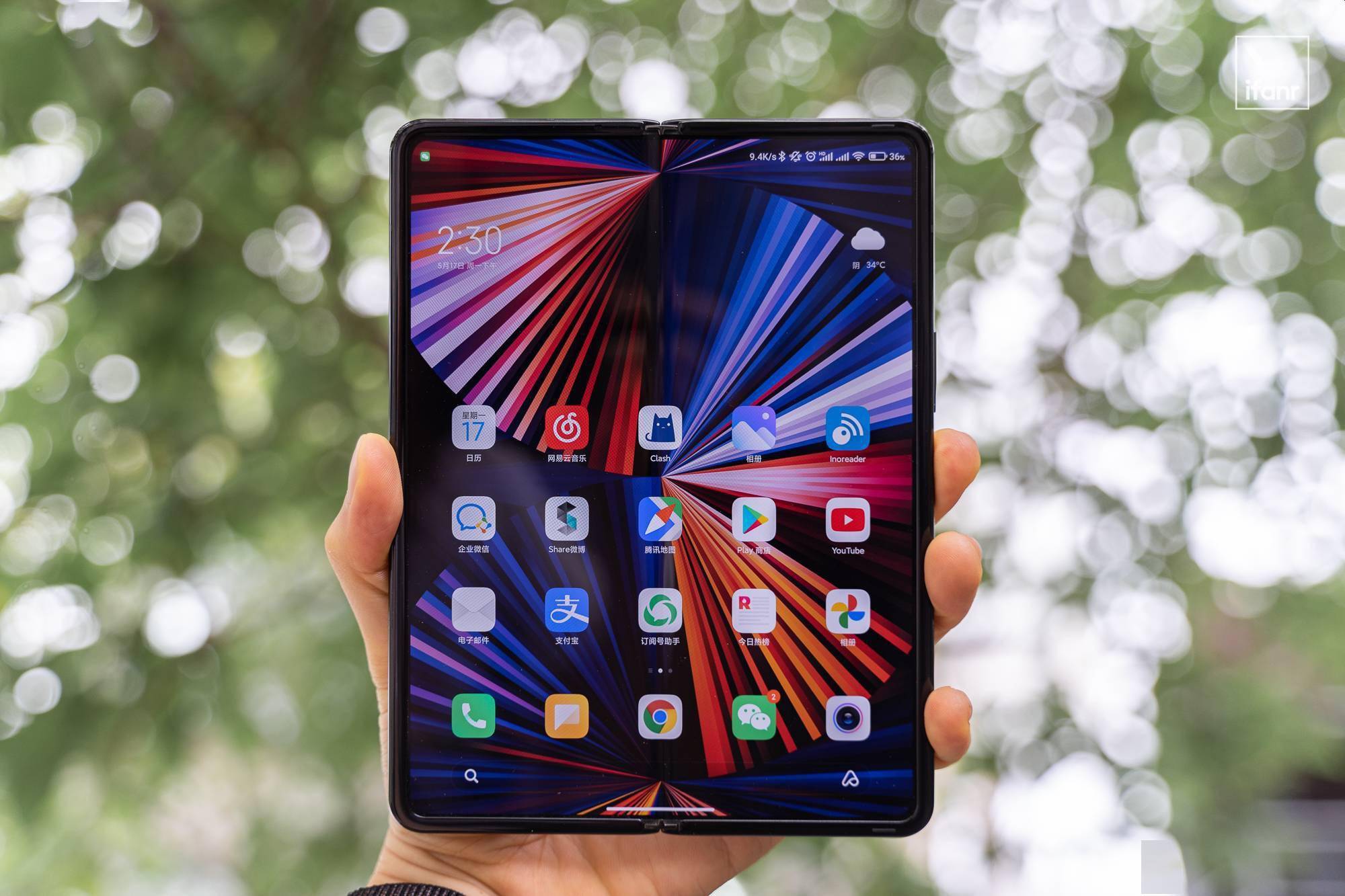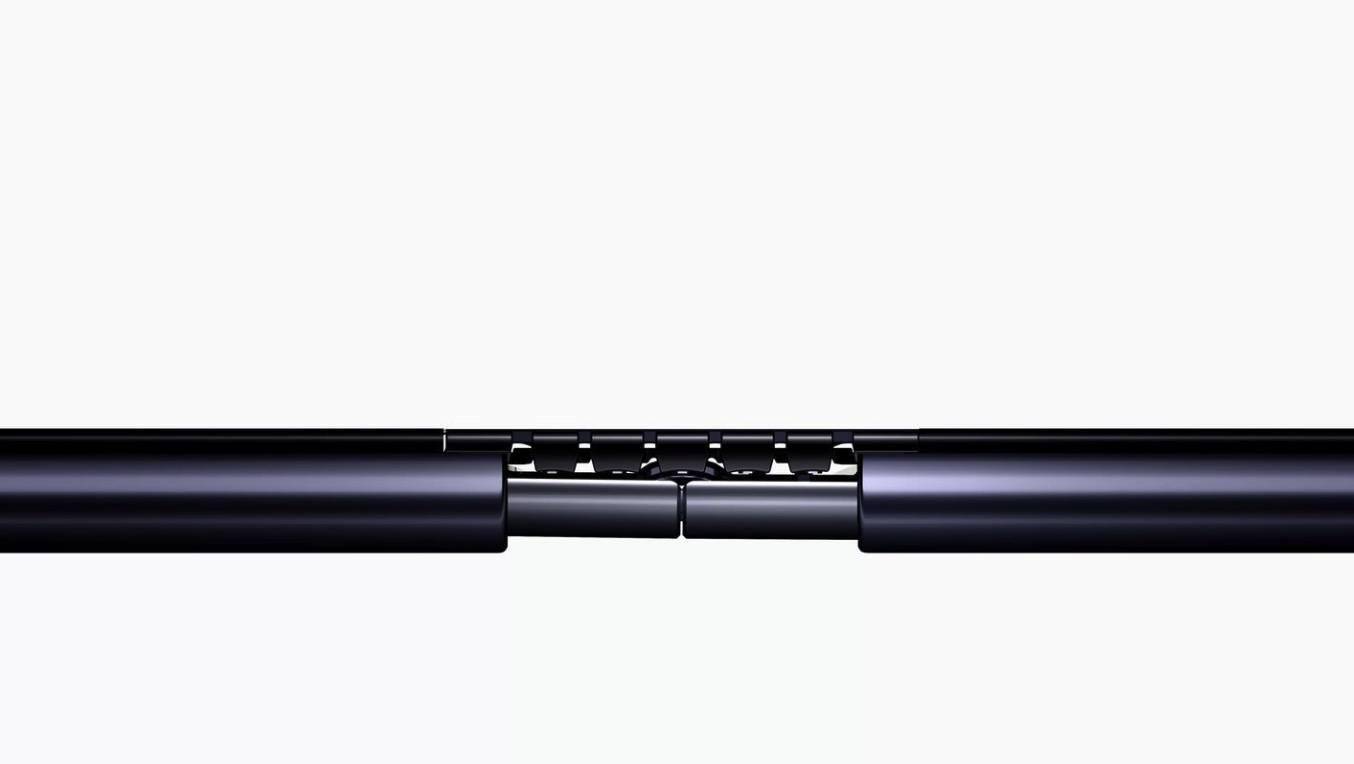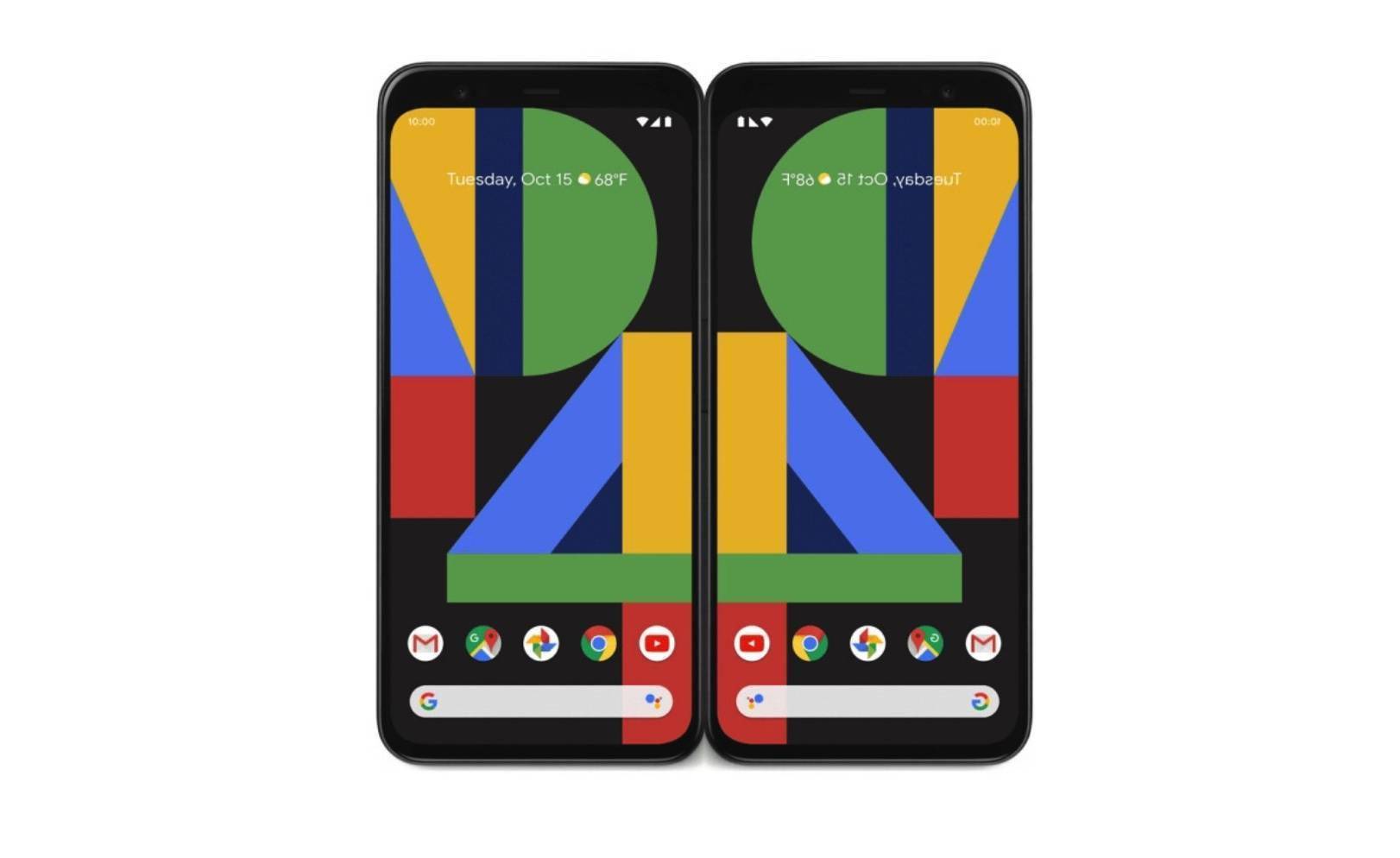
In the future, mobile phones are generally considered to be non-porous all-in-one devices, and current devices are also in this trend.
As a result, we have seen the rise of “full screen”. As a result, we have seen the continuous streamlining of mobile phone interfaces and buttons.

▲Galaxy Z Fold 2 and iPhone 11 Pro Max.
At the same time, some people think that future devices should not be limited by screen size, and should have richer application scenarios. Therefore, the concept of “folding” mobile phones is an attempt to break through the screen limitations.
It is like the “bamboo slips” popular in ancient times. It can be viewed and read when unfolded, and when it is rolled up, it is convenient to carry and move.
But later, “bamboo slips” did not become the carrier of our records. Cai Lun’s improved “papermaking technique” was the paper that could be used on a large scale.

▲ Samsung Galaxy Z Flip.
It is as if the horse-drawn carriage is not replaced by a faster horse-drawn carriage, but a car, but the process is not indispensable during the period. In other words, in the process of evolution towards the future, the shape of the folding screen is an indispensable process.
Advantages of folding screen
Simply put, this form of folding screen is actually a simple “2 in 1” device. It can be a smart phone or a “small tablet” with a large screen.

For users, the meaning of “folding screens” is to enable smart phones to better play different roles. For manufacturers, the “folding screen”, a device with a large screen and a small screen, is undoubtedly a verification and consideration of the system switching logic and hardware manufacturing process, laying the foundation for the subsequent development of different types of equipment.
Folding screens currently have two forms: vertical folding and horizontal folding. In an ideal state, after folding, it is only the size of a smart phone, or only half the volume, which can be more convenient to carry.

After the vertical folding and unfolding, there will be a screen close to 8 inches. Whether it is entertainment or simple processing workflow, the efficiency will be higher than that of ordinary mobile phones.
As for the horizontal folding, after unfolding, it is still in the state of a traditional smart phone. Relatively speaking, its advantage is more that it is smaller and more convenient.
Smartphone screens start from 3.5 inches. Every step forward, the screen area will be one inch larger. The concepts of “screen-to-body ratio” and “full screen” gradually surface. If smart phones continue to be our smart center, in the absence of technological innovation, “folding screens” may be a development direction.
Disadvantages of folding screens
Almost all the advantages of folding screens can be placed on the hardware, and different screens have different functions and scene adaptations. From the current point of view, the disadvantages of folding screens are not only in the hardware.

▲ Xiaomi MIX FOLD uses CPI film material.
It is not uncommon for the screen materials of traditional smartphones to use flexible OLEDs, but what prevents it from bending at will is the “rigid glass” on the surface. To “fold”, it is necessary to replace the protective glass (material) on the surface with a flexible material that can be bent on the basis of the flexible OLED material.
At present, this layer of bendable flexible material includes CPI film (colorless polyimide). Samsung’s first-generation Galaxy Z Fold and Xiaomi MIX FOLD use this material, which has good ductility, but is relatively traditional glass, CPI The hardness is not enough, it is easy to leave scratches and traces of use.

The most famous crash YouTuber JerryRigEverything tested the Mohs hardness of the Galaxy Z Fold’s inner screen at about 2. For comparison, the outer screen with Gorilla tempered glass is at 6. In fact, it’s a bit more airy. The CPI film has no resistance to scratching with a slightly harder nail.
On the Galaxy Z Filp, Samsung upgraded the protective layer of the screen from CPI film to UTG (ultra-thin glass) in order to improve the wear resistance of CPI. As for the efficacy, the results of JerryRigEverything are also quoted as a comparison. The Mohs hardness of the inner screen is still level 2, but from the effect point of view, it is still better than CPI.

▲ Galaxy Z Filp with UTG has limited scratch-resistant performance improvement. Picture from: JerryRigEverything
Even if the problem of the screen protection layer is solved, the bendable screen and the “mechanical hinge” have life problems. After bending to a certain extent, the brightness and contrast of the screen will decrease in the bending part, and the hinge will wear out every time it is bent. Over time, the mechanical performance will also decrease.
However, whether it is Samsung or Xiaomi, the mechanical life of the hinge can be maintained for 2 to 3 years before it goes on the market, which is a replacement cycle of a smart phone, so the screen and hinge are not a big disadvantage.

At present, both Aifaner readers and our editorial department believe that the “folding screen” lacks killer applications, that is, the lack of innovation at the software system level. When experiencing Xiaomi MIX FOLD, there is always a feeling of being at a loss when opening the screen. Even with the PC mode and split screen, it will still not bring a unique experience, and it will eventually become “iqiyi”.
The status quo of folding screens
At present, the core of the folding screen is still on the screen. From this point of view, Samsung is the first echelon, and it can be regarded as bringing the folding screen into the consumer industry with its own strength. Even though the original Galaxy Fold has experienced twists and turns, it is undeniable that it The meaning of existence. After several years of development, Samsung’s screen protection layer has been upgraded to UTG ultra-thin glass, and the output and yield of the display are increasing. And the overall Fold shape has gradually matured.
In addition to Samsung, subsequent screen manufacturers, such as BOE, Visionox, Tianma, etc., are also increasing their investment in flexible screens. After the supply chain is enriched, there are gradually more folding screen products on the market.

The most recent example is the Xiaomi MIX FOLD. Even though it uses some of the technology of the original Galaxy Fold, it has failed to prevent MIX FOLD from becoming a “folding screen” since its launch and the first price is less than 10,000 yuan. Some technologies for folding screens are not only maturing, but also increasing in cost and yield.
According to DSCC’s forecast, the cost of Samsung’s folding screen is about US$180, and it is expected to cost less than US$100 in 2022, which is lower than the current iPhone screen.

In addition to the screen, many components on the folding screen product need to be customized, and the hinges and other components need additional aging tests. These costs will eventually be transferred to the product pricing. These are also the reasons why the current price of folding screen products has stabilized at around 10,000 yuan.
Let’s talk about software. Whether it’s the first echelon of Samsung or the domestic system’s MIUI, their influence on the Android system is relatively limited. In other words, the disadvantage of the folding screen system may still require Google to start from the bottom. Think about how to provide a better and more efficient experience on a variable form of 2 in 1 device.
The future of folding screens?
It may be due to Samsung eating crabs before, or the related industry chain may gradually mature. According to a report by SamMobile, Google may try out folding screen products this fall. It may be released together with Pixel 6 and Pixel 6 Pro, named Pixel Fold, and the screen supplier is Samsung.

This year, Samsung and Google are getting closer. At the Google I/O conference last month, Google announced that it will build a new wearable platform with Samsung. The hardware depends on Samsung, and the software may also be developed together with Samsung.
Putting this trend on the possible Pixel Fold may also be more in line with the actual situation. Google is closer to a software company. At the beginning of Android, it found HTC to build Nexus phones together. Later, Google also cooperated with LG, Samsung, Huawei and others to launch Nexus series products.

Nowadays, Google is looking for Samsung to cooperate, and it feels a bit like the Nexus series made years ago. In fact, Google and Samsung launched the Pixel Fold at this node in the fall. The hardware may be based on the Galaxy Fold 2. It will still be a flexible OLED screen and UTG ultra-thin glass, with little change in form.
However, the software system will be managed by Google, and this is also one of Google’s main goals of launching folding screens. It is hoped that through practice, it will bring Android native systems that are more in line with future 2 in 1 devices. It may be possible to switch between large and small screens and how to improve large screens. The efficiency of these systems is a hindrance to focus on strengthening.

▲ The native Android 12 on Pixel Fold is the focus.
At the same time, the folding screens of the Pixel series will undoubtedly be very suitable test equipment for “developers” to develop dedicated apps. Compared to third-party vendors, Google still has at least some influence.
In addition, SamMobile also said that in addition to Google, Samsung may also start to provide foldable OLED screens for domestic manufacturers such as vivo and Xiaomi in October. In this way, the new wave of smartphones this fall may be led by “folding screens.”

▲ Microsoft Surface Duo.
In the mobile phone market, folding screens are still a very small choice. Whether it is Samsung’s Fold series, Samsung’s Flip, or Microsoft’s Surface Duo, the price has plunged considerably after the listing. For example, the Galaxy Fold 2 is now only about 7,600 yuan on Amazon, while the Surface Duo is only 4,500 yuan, and Xiaomi MIX Fold has also dropped 1,000 yuan in some channels.

▲ Xiaomi MIX FOLD, Samsung Galaxy Z Fold2, Huawei Mate X2. Picture from: XDA
This situation is just like the first generation of 5G smartphones. The technology is constantly changing. As the output and yield of the supply chain continue to increase, the product will become more mature and the price will naturally be reasonable. If SamMobile’s news is accurate, after all folding screens are listed in the fall, it may become a new consumer trend.
The final fate of folding screens may be like “bamboo slips.” Although they are eventually replaced by paper, the technology accumulated by manufacturers in this 2 in 1 form will not be lost. It may appear in future products.
#Welcome to follow Aifaner’s official WeChat account: Aifaner (WeChat ID: ifanr), more exciting content will be provided to you as soon as possible.
| · ·




























































You must log in to post a comment.